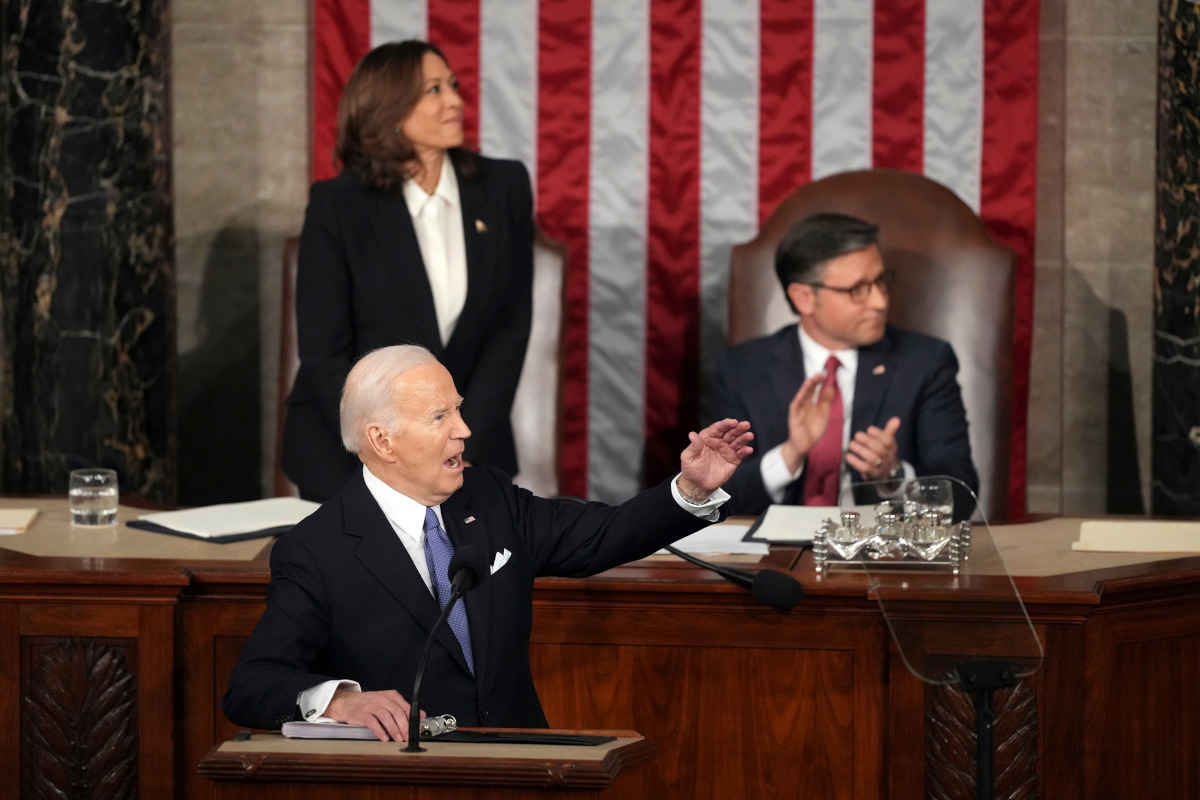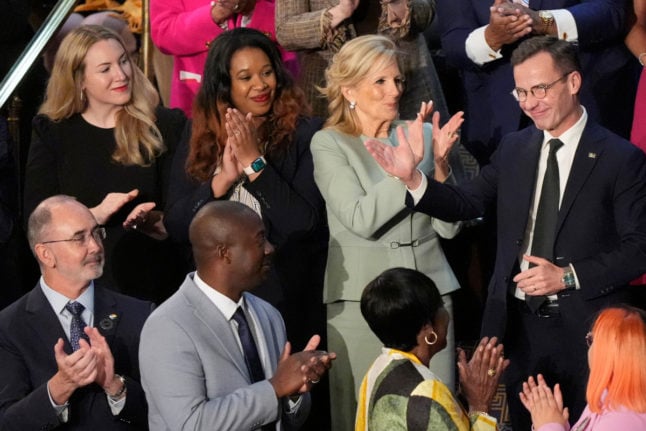Sweden on Thursday became the 32nd member of Nato, turning the page on two centuries of non-alignment and capping two years of tortuous diplomacy after Russia’s invasion of Ukraine triggered new fears.
Days after Hungary followed key holdout Turkey and became the last Nato member to sign off, Sweden ceremonially handed over accession documents to the United States, the leading force of the transatlantic alliance that promises joint security for all.
Kristersson late on Thursday attended as a guest at the annual State of the Union address of President Joe Biden, whose rival Donald Trump has disparaged Nato as unfairly burdening the United States.
“Mr Prime Minister, welcome to Nato, the strongest military alliance the world has ever seen,” Biden said as he recognised Kristersson, who sat in the gallery next to First Lady Jill Biden.

Biden urged the House leadership of the Republican Party to move on billions of dollars in military aid to Ukraine, saying, in a dig at Trump,
that “I will not bow down” to Russian President Vladimir Putin.
“If anybody in this room thinks Putin will stop at Ukraine, I assure you he will not,” Biden said.
‘Victory for freedom’
Kristersson, at an accession ceremony at the State Department, called joining Nato “a major step but, at the same time, a very natural step”.
“It’s a victory for freedom today. Sweden has made a free, democratic, sovereign and united choice to join Nato,” he said.
He later delivered a televised address to the nation from Washington, telling Swedes: “We are a small country, but we understand more than most the importance of the greater world beyond our borders.”
Secretary of State Antony Blinken said few would have expected Sweden as well as Finland to join Nato before Putin ordered the invasion of Ukraine in February 2022.
There is “no clearer example than today of the strategic debacle that Putin’s invasion of Ukraine has become for Russia,” Blinken said.
Ukrainian President Volodymyr Zelensky also hailed Sweden’s membership, saying: “One more country in Europe has become more protected from Russian evil.”
Overcoming Turkish reluctance
Sweden has not fought in a war since the Napoleonic conflicts of the early 19th century.
Sweden and Finland, while militarily intertwined with the United States and both members of the European Union, had historically steered clear of joining Nato, formed in the Cold War to unite against the Soviet Union.
Finland and Sweden launched a joint bid quickly after the invasion of Ukraine, which itself had unsuccessfully sought to join Nato.
Finland successfully joined in April 2023, but Sweden’s membership was stalled by Turkey.
“Good things come to those who wait,” Blinken said as he received the documents from Sweden.
Russia has vowed “countermeasures” over Sweden’s entry into Nato, especially if the alliance’s troops and assets deploy in the country.
Sweden’s blue and yellow flag is expected to be hoisted on Monday at the Brussels headquarters of the North Atlantic Treaty Alliance.
Before agreeing to ratify membership, Turkey used its leverage to press Sweden, known for its liberal asylum policies, to crack down on Kurdish militants who have campaigned against Ankara.
Turkish President Recep Tayyip Erdogan later demanded action after protesters, enjoying Swedish laws on free speech, desecrated Islam’s holy book the Quran.
In a clear if unstated sweetener, the United States dangled the sale of F-16 warplanes to Turkey, which has faced the wrath of US sanctions over an earlier major military purchase from Russia.
The Biden administration in January approved $23 billion in F-16 warplanes for Turkey swiftly after it ratified Sweden’s membership.
The United States simultaneously pushed ahead with $8.6 billion in more advanced F-35 jets for Greece, a fellow Nato member and historic adversary of Turkey.
Even after Turkey’s blessing, Sweden faced another obstacle as it needed approval of a last country – Hungary, whose nationalist prime minister, Viktor Orban, has often thumbed his nose at Western allies.
The Hungarian parliament ratified Sweden’s membership on February 26th. But in one last hiccup, Hungary could not sign the accession document due to a brief absence in the mostly ceremonial post of president, after an Orban ally resigned over pardoning a convicted child abuser’s accomplice.



 Please whitelist us to continue reading.
Please whitelist us to continue reading.
Member comments